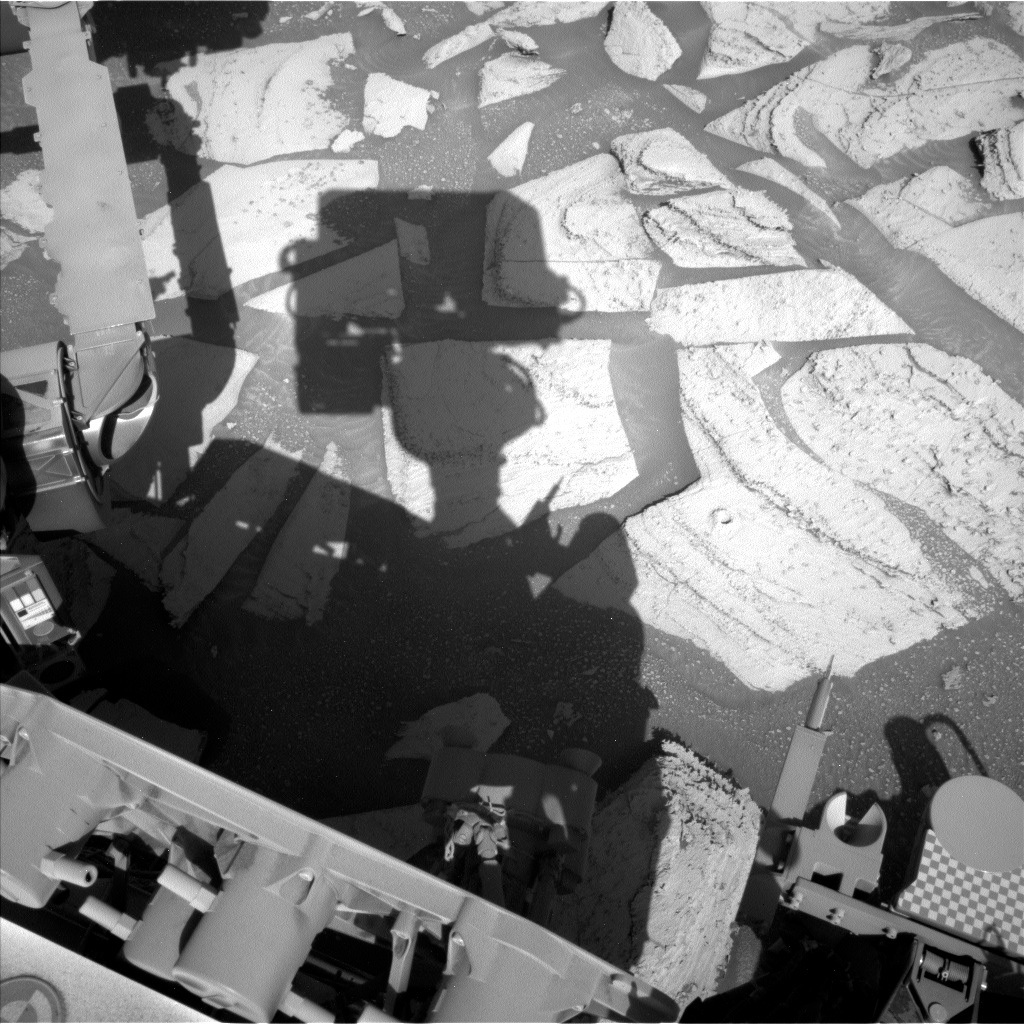2 min read

Earth planning date: Wednesday, October 18, 2023
The target 'Sequoia' has been successfully drilled! The image today is one of my favourites – the shadow of the rover mast, and the perfectly drilled target in the background... it doesn’t get much better than that! Curiosity stays in place for a little while longer for CheMin analysis of the drilled material, and no drive meant we had more power than expected. And wow, the science team stepped up - we managed to get 1 hour of observations on the first sol, and 1.5 hours on the second sol!
Today in planning, I undertook the role of 'Keeper Of the Plan' for the geology and mineralogy science theme group, and the role is abbreviated to GKOP. It was my job to make sure the geology-focused science requests from instrument teams made it successfully into the plan to be sent to the rover. For the first sol of this midweek plan, we start off with a Navcam dust devil survey. Then, ChemCam takes over for two LIBS observations of the drillhole and the tailings to determine the chemical composition here. Mastcam comes in at the end of the first block of activities to document the ChemCam activities on Sequoia and to again attempt to identify any change by wind activity. On the afternoon of the first sol, and morning of the second sol, we also planned photometry observations. Using Navcam and Mastcam images taken at different times of the day, we can measure the reflectivity of the surface and can use this in working out the physical properties of the surface.
A couple of hours after the early morning photometry, the second sol contains 1.5 hours of science observations. First, a Mastcam tau observation is used to measure atmospheric opacity. We then turn to ChemCam for a LIBS target on the same block as the drillhole, named 'Angel Wings.' This observation is paired once again with a Mastcam documentation image. We then turn to a nearby butte named 'Kukenan' for a ChemCam Long Distance RMI, as well as a beautiful, big Mastcam mosaic of the entire butte face! One of the great things about drill campaigns is that we stay put for a while, and are able to get large observations of the beautiful surroundings.
Written by Emma Harris, Graduate Student at Natural History Museum







